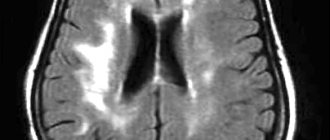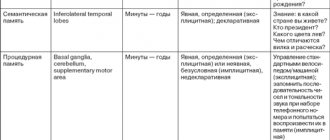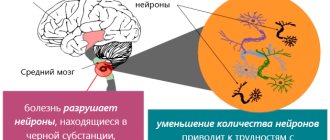Savant syndrome manifests itself with photographic memory and unusual abilities. From a medical point of view, this syndrome is not a disease; it is not described in ICD-10. However, savantism acts as a concomitant phenomenon in autism spectrum disorders and pathologies in the functioning of parts of the brain.
Most researchers agree that the phenomenon of savant syndrome is a genetic disease caused by a mutation on the Y chromosome, which is why there are more male savants than females.
What is savant syndrome
What is savantism? This is a feature of the brain that was studied and described by D. L. Down, and was interpreted by him as a person’s talent in a particular field of science or art. D. L. Down believed that the phenomenal development of the abilities of a person with this syndrome is due to the formation of a center of genius in his brain structures. It appears as a consequence of damage to the central nervous system.
Genius or giftedness is due to the dominance of the right hemisphere of the brain over the left, while in most people the left hemisphere of the brain is dominant.
In modern clinical psychology, it is widely believed that savantism is a type of autism. Like autism, savant syndrome is characterized by a very high level of memory development in a person, a heightened sense of time, and pronounced linguistic abilities. But the lack of balance in interhemispheric interaction does not allow such clients to successfully master the traditional educational program and socialize.
In most cases, the effect of savantism is a congenital feature, but there are cases of the syndrome developing in humans as a result of brain injury.
Symptoms and features of savantism
People with savant syndrome exhibit the following characteristics:
- they have very low rates of intellectual development due to disorders in the functioning of the brain;
- lagging behind peers in physical development;
- deviations in mental development;
- autism spectrum disorders;
- their stock of ideas about the world around them is very small;
- their self-care skills are poorly developed;
- they avoid eye contact and body touch;
- movement disorders;
- pathological introversion;
- the need for communication and interaction is low;
- poor speech development, expressed in a violation of the letter-syllable structure of words;
- they have speed reading, the ability to extremely quickly perform complex arithmetic operations in their minds;
- they have difficulty mastering writing;
- they have a photographic memory;
- They are characterized by a passion for music or painting.
The first signs of savantism
The first signs of savantism are a child’s pronounced passion for some area of activity during early childhood. People with savant syndrome can memorize a fairy tale at the age of 2 after listening to it once, and independently learn to perform mathematical operations in their minds.
But the formation of self-service and social orientation skills occurs with great difficulty. For many of them, dressing or eating independently poses serious difficulties.
An autistic person with savant syndrome in infancy reacts painfully to adults’ attempts to establish emotional contact with him.
Forms of savant syndrome
Savant syndrome in humans manifests itself in different forms:
- Analyzer form. With this type of disorder, people have a heightened sense of smell, ultra-clear vision and very acute hearing. Their analyzer sensitivity thresholds allow them to acutely sense odors, hear any rustle and see everything in the smallest detail.
- Mnemonic form. This type of disease manifests itself in the patient’s ability to quickly remember various types of information. At the same time, the material is remembered so firmly that a person, without referring to it for a long time, can easily reproduce what he has once memorized.
- Musical form. In this case, a person has an absolute ear for music; he can independently learn to play various musical instruments in childhood. Clinical studies have found that people with this form of savant syndrome can play a tune they heard on the radio on a musical instrument the first time they try it.
- Figurative form. If a person with savant syndrome has a figurative form of pathology, then he draws beautifully and can sculpt a completely identical sculpture by a famous master. This category of patients, engaged in visual arts, produce unusually realistic works of art.
- Mathematical form. People with this form of savant syndrome know how to multiply multidigit numbers. They perform mental calculations in a few seconds.
- Linguistic form. People with this type of savantism can quickly learn any foreign language and speak it fluently, as if in their native language. This type of brain pathology is less common than others.
Description
Savantism is spoken of as a special gift that compensates for mental impairments.
This condition combines cognitive dysfunction with amazing abilities. In people with mental retardation, the functioning of the left hemisphere of the brain is impaired. It is responsible for verbal functions, logical thinking, and analytical processing of information. Insufficient function is reflected in weakness of mental reaction, lag in verbal and logical thinking.
With Savant syndrome, the right hemisphere seems to be trying to compensate for the defect of the left, focusing on one of the five senses.
Hence the unique abilities of patients, which are most clearly manifested in the following areas:
- art;
- music;
- mathematics;
- cartography;
- calendar calculations.
A person with Savant syndrome can easily calculate the result of multiplying multi-digit numbers, retell text they have just heard with great accuracy, and also have incredible linguistic abilities.
Reasons for the emergence of savantism
Scientists, studying people with genius, were looking for an answer to the question: what kind of disease is savant syndrome? While studying the biographies of famous people with savant syndrome, scientists were able to compile a list of reasons that provoke the formation of an island of genius in the brain:
- Genetic predisposition. The results of clinical studies show that the disease is inherited, especially if the parents are over 40 years old. This means that if one of the parents is a savant, then, most likely, the child of this couple will also have this feature of brain function.
- Premature birth. Statistics show that many famous people with savant syndrome were born prematurely. Their weight was below normal.
- Brain injuries in the postnatal period. Some people develop language, visual, or mathematical abilities after a traumatic brain injury, such as in a car accident. This reason is responsible for the formation of acquired savant syndrome.
- Inflammatory process in the brain tissue of the fetus during intrauterine development.
- Vitamin D deficiency in the fetus during intrauterine development. Lack of vitamins is considered in medicine to be the main cause of genetic mutations. This means that not only savant syndrome, but also other intellectual problems can be acquired by a child whose parents live in an environmentally unfavorable area.
- The occurrence of savant syndrome against the background of autism, Down syndrome, mental retardation, and mental disorders.
Autism - symptoms
In typical forms, autism symptoms appear before age 3.
However, parents usually notice the first signs already in infancy. They are worried that the child is too silent, calm, does not flinch from noise, does not focus his eyes on incoming people, and if he is picked up, he freezes warily. Such a baby can look at one point for a long time, for example, at a clock with a pendulum or a curtain swaying on the window. It happens that initially the child’s development is normal, and then suddenly something “unusual” appears. The disease is more common in boys, but autism symptoms are stronger in girls. It is not curable, but the sooner it is diagnosed, the better. The necessary therapeutic treatment can provide an autistic child with relatively normal developmental conditions, and quality care is also important.
Risk factors
It is believed that risk factors for the formation of savant syndrome are:
- the baby is born before the 35th week of pregnancy;
- birth injury to the fetus, as a result of which resuscitation measures were carried out;
- fetal weight at birth is less than 2500 g;
- abnormal physiological structure of the brain, lack of a clear division of the brain into 2 hemispheres;
- brain swelling resulting from a blow to the head;
- the effects of radiation on the body;
- presence of autism spectrum disorder.
Diagnosis of autism
There are no specific medical tests that immediately answer the question of whether a child has autism. When recognizing the symptoms of autism, specialists first pay attention to the child’s behavior and development.
Diagnosis is divided into two stages
- Child Development Test: The specialist checks whether the child has basic skills appropriate for his age or whether there is a developmental delay. If there is a suspicion that the child is at high risk of developmental disorders associated with other people in the family having autism, premature birth or low birth weight, then additional screening tests are performed. Screening tests should be carried out on children 1.5-2 years old.
- A comprehensive assessment of the child’s condition is the second stage of diagnosis. The assessment includes the child's behavior and an interview with the parents, and neurological and genetic tests and other medical tests may be performed. A comprehensive assessment is usually done:
- neurologists – evaluate the functioning of the brain and nerves;
- developmental pediatricians – assess the child’s development;
- child psychologists or psychiatrists - determine the presence of deviations in psycho-emotional terms.
Note: if you suspect that our child is developmentally delayed, contact a specialist as soon as possible! Even if they can’t confirm your diagnosis, taking a course of sessions at an osteopathy center will be beneficial even for a healthy baby, but for someone suffering from undiagnosed autism, it is simply necessary!
Diagnosis and treatment of the syndrome
The main diagnostic method for this disease is MRI and CT, an encephalogram of not only the patient himself, but also his closest relatives. To determine the form of the disease, intelligence tests are used, as well as techniques that allow one to assess the emotional-volitional sphere of the individual. This is necessary in order to exclude other pathologies of intellectual and mental development.
Clinical psychologists and psychiatrists treat savantism. At the same time, attention is drawn to the fact that there is no cure for this disease, so the goal of therapy is to teach the child to communicate while preserving his talents.
The main methods of correction are fairy tale therapy, art therapy, massage, and physiotherapy. If necessary, a speech therapist works with patients, correcting defects in sound pronunciation.
Complications
Savant syndrome is believed to be a disorder that does not in itself cause serious harm to a person. However, it can provoke negative consequences. Common complications of savantism are:
- mental disorders, depression;
- difficulties of interaction and socialization;
- suicidal tendencies.
Famous people with savant syndrome
Savant syndrome has been diagnosed in such famous people as:
- Kim Pik, who was born with this pathology. He had a unique ability: he read 2 pages of a book at the same time. He read one page with his left eye, and the second with his right. At the same time, Kim Pik remembers the contents of all the books he has read. In addition, he amazed his contemporaries with his computing skills and ability to determine the day of the week of a given date. The type of phenomenon of this savant is shown in the film “Rain Man”.
- Stephen Wiltshirk is a man whose savantism was combined with autism. However, this did not stop him from becoming a talented landscape artist and architect. Phenomenal memory allows one to remember the smallest details of a drawing or painting, even if he only glanced at the sheet.
- Derek Paravicini was a famous blind savant musician. He accurately reproduced the melodies he once heard. This patient also had a concomitant pathology – echolalia. This man's intelligence level corresponded to the age of a 4-year-old child, but this did not prevent him from gaining worldwide recognition in jazz.
- Daniel Tammet is a savant who suffers from epilepsy and autism. He became famous for his ability to perform complex mathematical calculations in his head. In addition, Tammet could learn any foreign language in a week.
- Leslie Lemke is a pianist with savant syndrome, who in addition to this illness was diagnosed with blindness and cerebral palsy. He was born with congenital glaucoma, due to which he became blind. Already blind, Lemke mastered playing the piano, learning to select the right notes for famous melodies by ear. Leslie's performances with works of her own composition attract entire concert halls of enthusiastic spectators.
- Ben Underwood is a savant who navigates space using very acute hearing: he snaps his fingers and judges the location of objects in a room by the sound reflected from them. Savantism in this young man developed as a compensatory mechanism as a result of injury to the visual analyzer.
Symptoms, signs
Almost all savants have outstanding memory, which contributes to the formation of unusual skills.
From an early age, they are ahead of their peers in certain areas. Important! When their peers are just learning numbers, these children make complex mathematical calculations. But at the same time, they cannot fully take care of themselves: get dressed, go shopping, perform household chores, etc.
Savants are characterized by the term “verbal adhesion”, i.e. the patient remembers huge amounts of text, easily retells it, but does not understand the meaning and content.
When examining a picture, a person remembers the smallest details, not paying attention to what is shown in close-up.
People suffering from the disease are usually uncommunicative and have problems expressing thoughts and emotions. They are characterized by a certain type of behavior: when communicating, they avoid visual and tactile contact. They are characterized by speech disorders and stereotyped movements.
Famous people with Savant syndrome
To get an idea of how severe disability is combined with genius abilities, here is an example of the most famous people with Savant syndrome:
- Kim Peak.
The most famous savant with a phenomenal memory. Born with numerous congenital pathologies: damage to the cerebellum, cranial hernia, absence of the corpus callosum. I learned to read at the age of 1.5, and by the age of 14 I had mastered the entire school curriculum. He developed his own range of interests: music, history, literature, geography. It was in these areas that he demonstrated unique abilities. About 12 thousand books were stored in his memory, he knew many classical musical works, when and by whom they were written. At the same time, Pick had many physical abnormalities: he learned to walk only at the age of 4, he had hypotension, which manifested itself in motor disorders. He could not eat food on his own or move without help. - Derek Paravicini.
Famous jazz musician. Born 14 weeks premature, he has severe mental retardation, blindness and autism. At the age of 2, he mastered playing the piano, first playing with his elbows, since due to blindness he could not see how to do it correctly. Just once, having heard the melody, he repeats it. Derek completely lacks self-service skills, he does not understand where food comes from, how it is prepared, he does not know where is right and where is left. - Stephen Wiltsher.
British artist and architect with a unique visual memory. The boy was diagnosed with autism at the age of 3; he did not speak until he was 5 years old and attended a school for the mentally retarded. He recreates exact panoramas of the cities he has visited. Once he sees a building, he draws an exact copy of it on paper, depicting everything down to the smallest detail. - Daniel Paul Corney.
He has been diagnosed with autism since infancy; at the age of 4 he had his first epileptic seizure. He knows 11 foreign languages perfectly and carries out complex mathematical calculations in his head. At the same time, he is unable to drive a car, and in everyday life everything happens according to a planned strange scenario: he does not put on his slippers before his T-shirt, does not take a shower before brushing his teeth.
Consequences
Savants are prone to frequent depression and other mental disorders that are caused by difficulties communicating with other people and a feeling of inferiority. Against this background, suicide attempts were noted.
My recommendations
The main difficulty that parents of savant children face is teaching them self-care and communication skills. They do not perceive verbal instructions from adults. I recommend that parents of such children use alternative methods of communication: pictures, diagrams, sheets placed in prominent places with a graphic representation of the sequence of actions. The savant perceives visual images better than oral speech.
Psychocorrectional work with such children is focused on helping them with socialization. Such children need to be taught to live among people, come into contact with them, and carry out joint activities. A serious obstacle in this process is their poor development of the emotional-volitional sphere.
I noted that art therapeutic technologies fully correspond to the individual characteristics of children with this illness.
In addition to correcting the emotional-volitional sphere, I consider it necessary to develop the logical thinking of these people and expand their ideas about the world around them. Their heads contain multi-volume encyclopedic knowledge, which they absolutely do not know how to use. We need to help them apply their theoretical basis in life.
It is possible to achieve lasting positive dynamics in the psychocorrection of savantism only through long-term work together with a defectologist.










